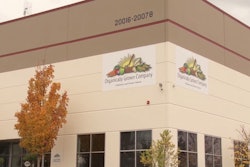
Multiple cases of food contamination kept the detection, response, recovery and prevention of food recalls in the news and was a hot topic within the supply chain this year. With the first set of Food Safety Modernization Act (FSMA) rules only just released by the Food and Drug Administration (FDA) this September, many manufacturers across North America will be entering into the New Year continuing to work toward compliance. On their heels are new and growing concerns of how allergens and food packaging chemicals are handled, which means 2017 might see a push to implement food safety beyond processing and into the labeling and packaging of products.
The majority of food safety measures thus far have focused on the sourcing and preparation of food and not on its packaging, despite the fact that it’s a critical component in the safety of consumer products. There are nearly as many quality concerns with the packaging and labeling of our food as there are with the processing of it: missing a detail on the list of ingredients, ink migrating through packaging and the chemicals used to manufacture bottles, plastic and cardboard containers. All of these aspects are critical to the safety of our food and have attracted the attention of consumers, regulators, industry and the media alike.
As these concerns trickle down throughout the supply chain, food manufacturers should be reviewing standards and initiating risk-assessments of their packaging suppliers in relation to their products and processes. For some manufacturers that means current efforts to track the origin of their ingredients through the processing of their products may not be enough anymore. Food traceability records also might have to contain information about the manufacturing of their packaging as well.
With the globalization of food distribution on the rise, it’s more important than ever to consider the vital role packaging plays to ensure food products are safe for consumption. Over the coming years, packaging suppliers might see more demand for traceability data that can be passed on to customers to be amended to their products’ traceability records. They also might be expected to adhere to new safety and quality standards or even become GSFI certified in order to do business.
As the food and beverage industry continues to streamline and automate quality and traceability, the need will grow for the packaging industry as well. Large consumer packaged goods companies already have begun to see the writing on the wall, forming the Food Safety Alliance for Packaging, a technical committee of the Institute of Packaging Professionals (IoPP). Their initiative has developed HACCP models for packaging material categories: cartons, rigid plastics, cut and stack labels and composite cans.
It’s safe to assume that food safety will be just as important in the New Year as it’s been in years prior. We will continue to see standards and requirements trickle down within the industry affecting not just food manufacturers themselves but the suppliers who support them. Companies who might not necessarily fall within FSMA guidelines will be encouraged, if not mandated, by their customers to comply as well.
The good news is that the technology industry has been busy developing a variety of ways to help companies be compliant. From “food to fork” ingredient tracking, track and trace software to full Traceability Solution Platforms, addressing not only the need to store and access traceability data for food and beverage manufacturers but provide greater inventory visibility, automate the collection of critical data and streamline processes for all manufacturers within the food supply chain.

















